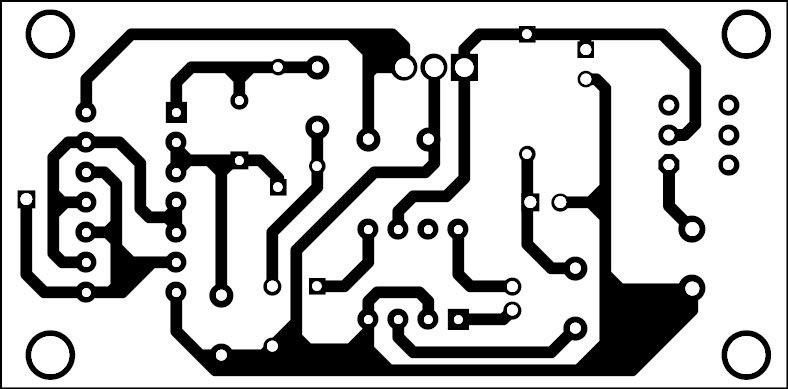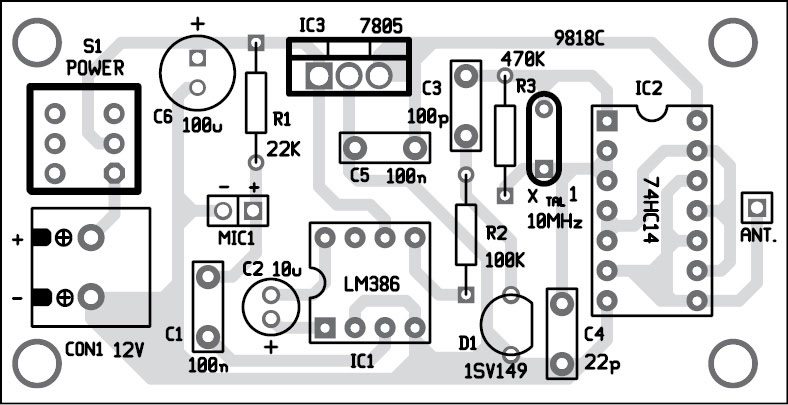A baby monitor can help you find peace of mind. You can now monitor your sleeping baby with this wireless baby monitor. It is a radio system used to remotely listen to sounds made by an infant. Simply place the circuit near your sleeping baby and listen through an FM receiver from any other room in the house. It can also alert you if the baby wakes up in the middle of the night.

Circuit and working
The circuit is built around a low-power audio amplifier using LM386 (IC1), hex inverting Schmitt trigger 74HC14 (IC2), voltage regulator 7805 (IC3), 10MHz crystal (XTAL1), varactor diode 1SV149 (D1) and a few other components. A parallel resonant oscillator circuit is formed around inverter gate N1 along with crystal (XTAL1), resistor R3, capacitors C3 and C4 and varactor diode D1. It generates square waves at the fundamental frequency of 10MHz of crystal.
The signal is buffered by gate N2 and further boosted by parallel inverter gates N3, N4, N5 and N6. Unlike sine waves, square waves have many harmonics above their fundamental frequency. The monitor transmits on tenth (100MHz) harmonics of the square wave. Use a quarter-wave 75cm piece of wire for the antenna.
The audio section of the transmitter is built around IC1. The gain is set to 200 by capacitor C2. Audio from electret microphone MIC1 is picked up and amplified by LM386. It is then coupled with varactor diode D1 via resistor R2. The crystal’s frequency along with D1 forms an FM modulation signal. Since the circuit transmits on tenth harmonic of crystal frequency, audio deviation is also multiplied by a factor of 10. This results in clear audio that can be received on an FM receiver.


Download the PCB and component layout PDFs: click here
Construction and testing
An actual-size, single-side PCB for the baby monitor circuit is shown in Fig. 2 and its component layout in Fig. 3. Keep all leads as short as possible. After assembling the circuit on a PCB, enclose it in a suitable plastic box. Drill a small hole for the microphone. Use 12V to power the circuit. The current consumption of the circuit is very low. Before using the circuit, ensure that power supply is correct.
The author is an electronics hobbyist and a small-business owner in Albany, New York, USA. His interests include designing radio frequency circuits







WHAT THIS diode D1 ( 1SV149 )
varactor diode
can use similar diod or anything else
Yes you can use any varactor diode. You can also experiment with IN4001 or IN4007
Sir, varactor diode1sv149 not available.Pls suggest anothor diode. I use1N4001&1N4007diodes but it not work.
Try a 16v zener diode. Isv149 is available on ebay from chinese sellers
I can give you an alternative circuit. U can mail me at [email protected] it uses one xtal and one in4007 diode as varactor
Do we need heat sinks for both the ICs separately?
No heatsinks needed.